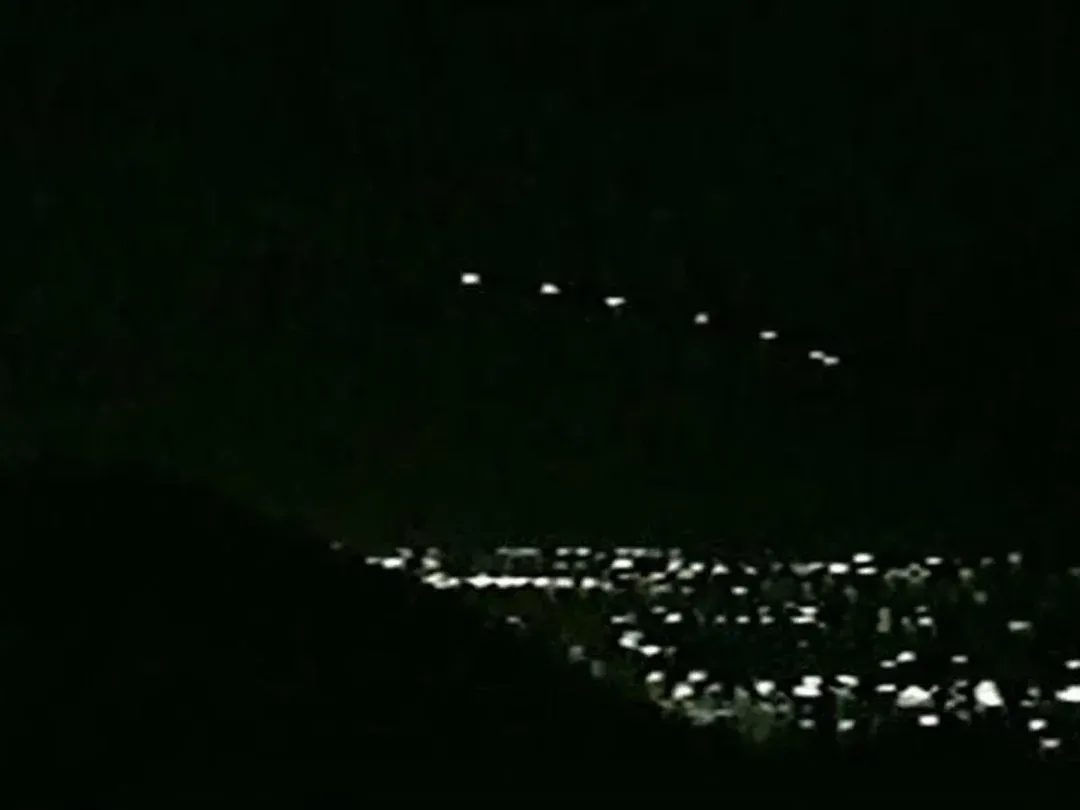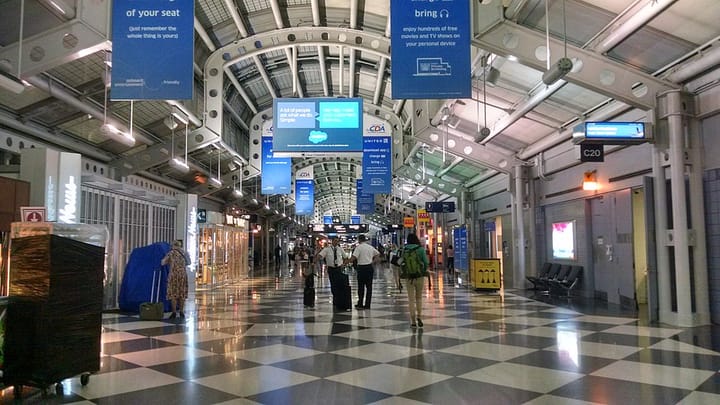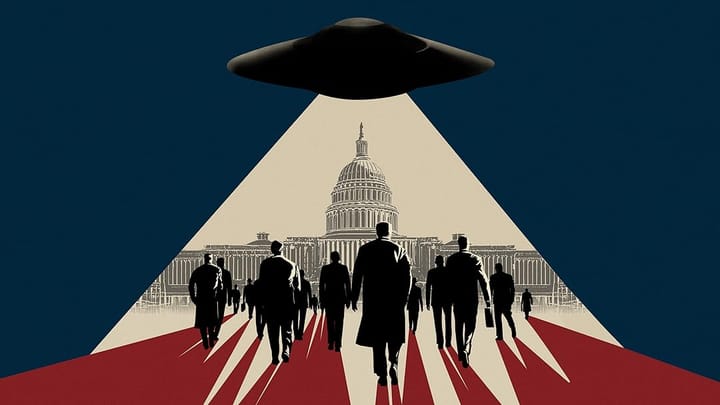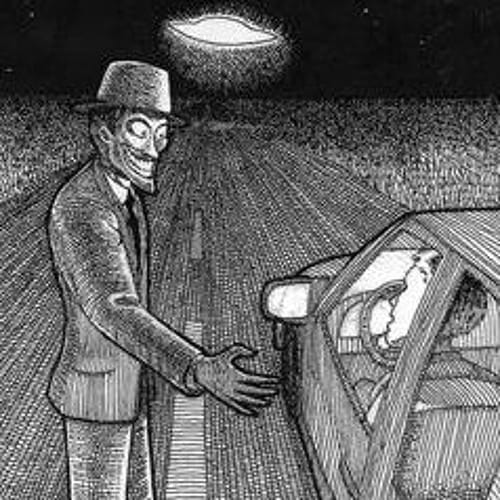The Phoenix Lights (1997, Arizona & Nevada)

Overview
On March 13, 1997, thousands across Arizona (and parts of Nevada) reported peculiar lights: first a slow, V-shaped formation moving south across the state; later a stationary row of bright lights over Phoenix. The events spanned roughly 7:30–10:30 pm MST over ~300 miles. Debate has centered on whether these were structured craft or aircraft and training flares from Air National Guard units rotating through Tucson’s winter “Operation Snowbird.” Wikipedia+1
Timeline
- ~7:55 pm — First reports from Henderson, NV and then north-central Arizona describe a large, V-shaped array of lights traveling southeast. Wikipedia
- 8:15–9:30 pm — Witnesses in Prescott Valley and then the Phoenix metro describe a carpenter’s-square or chevron formation passing quietly overhead. Wikipedia
- ~10:00 pm — A second, separate event: a row of bright, near-stationary lights appears over the Sierra Estrella/Buckeye area, repeatedly filmed from the valley floor. Later analyses tie these to illumination flares dropped by A-10s on the Barry M. Goldwater Range under Snowbird deployments. Skeptical Inquirer
- Aftermath — Then-Governor Fife Symington initially spoofed the frenzy, later stating he had seen a large triangular craft and thought it was not flares. Deseret News+1
Primary sources
- Reference hub with consolidated timeline and descriptions. Wikipedia
- Operation Snowbird (ANG) background on winter training tied to Davis-Monthan AFB and range work. Air National Guard
- Skeptical reconstructions of the 10 pm lights as Maryland ANG A-10 flare drops from the 104th Fighter Squadron. Skeptical Inquirer
- Symington statements describing a “craft of unknown origin.” Deseret News+1
- Mainstream recap noting the flare explanation for the later event. ABC News
Claims and counterclaims
Claim: The early V-formation was a single, enormous craft blocking stars and moving silently over multiple cities.
Counter: Investigators argue a formation of aircraft seen at distance can appear as a single object; witness perspective, altitude uncertainty, and city-light contrast amplify the effect. The record shows two distinct events that night, not one continuous craft performance. Wikipedia
Claim: The 10 pm lights hovered over Phoenix — proof of something beyond aircraft.
Counter: Video triangulations and timing align with parachute illumination flares (LUU-2/B) dropped by A-10s from a Snowbird detachment training on the Barry Goldwater Range; the lights appear stationary because they descend far to the southwest and wink out behind the Estrellas as the flares burn out. Skeptical Inquirer+1
Claim: A former governor said he saw a structured craft, not flares.
Counter: Symington’s testimony keeps the controversy alive, but it is still eyewitness interpretation; the flare records address only the second event and do not “solve” the earlier reports. Deseret News+1
Credibility meter (1–5)
- Witnesses: 4 — Many public and some official witnesses across the state; consistency higher for “lights,” lower for “solid craft.” Wikipedia
- Physical evidence: 1.5 — No recovered materials; mostly video and photos with limited geodata.
- Documentation: 3 — ANG training context and media/video archives are strong; limited formal, released flight logs tied to each visual. Air National Guard+1
- Expert review: 3 — Competing analyses; flare model is robust for 10 pm event, earlier formation remains debated. Skeptical Inquirer
Overall: ~3.00 (iconic, partly explained, partly unresolved, lots of potential witnesses)
Red flags
- Two separate events get conflated into one “mega-craft” narrative, muddying analysis. Wikipedia
- Many videos lack synchronized bearings/elevations, making rigorous triangulation hard.
What we know
- A large wave of reports occurred over hours and hundreds of miles on March 13, 1997. Wikipedia
- The 10 pm lights correlate well with ANG flare drops tied to Snowbird training on the Barry Goldwater Range. Skeptical Inquirer+1
Unknowns
- The precise identity of the earlier V-shaped formation(s) crossing Arizona before 10 pm.
- Whether a single formation of aircraft, multiple flights, or perception effects best explain the earliest “one huge object” claims. Wikipedia
What If…?
What if the Phoenix Lights were a perfect storm: a real training exercise producing spectacular range flares ... plus a separate, quieter overflight by multiple aircraft that human perception knit into a single, city-sized craft? Flip it: what if the early formation really was a massive platform (human or not) using low-observable tricks to ride public airspace without formal acknowledgment? A third lens sees a social-tech echo: a few ambiguous visuals, amplified by 90s media and home camcorders, birthing a modern myth. None are proven ... but each explains why the case still divides the field.
Non-human craft hypotheses
1) Single ultra-large platform
- Silent lift profile: A craft the size witnesses describe would normally create jet, prop, or rotor noise. Near-silence suggests non-aerodynamic lift such as directed electromagnetic or field effects that do not require large moving surfaces.
- Low-speed stability: Reports describe slow, steady motion without stall behavior. A field-lift system could decouple forward velocity from lift, allowing creeping speeds at low altitude without buffeting.
- Star occlusion reports: Multiple witnesses said stars blinked out as the array passed. If accurate, this fits a contiguous underside rather than separated aircraft. It could also be a skin of light-emitting panels that modulate brightness to blend with the night sky.
2) Distributed craft acting as one object
- Phase-locked formation: Several smaller vehicles could fly with millisecond timing that keeps fixed geometry and shared navigation, presenting as a single V.
- Shared sensor fusion: A mesh network could merge multiple sensor feeds and coordinate lighting to simulate one outline. If lights are coordinated to preserve parallax cues, observers would read a single giant object.
3) Field propulsion signatures
- Minimal thermal plume: Eyewitnesses did not report heat shimmer or exhaust glare. Field propulsion would shift energy signatures away from hot exhaust and into hard-to-see EM domains.
- Gravity gradient navigation: A gravity or inertial control system could allow sharp course corrections with little audible cue. On video this can present as smooth glides and sudden heading changes without banking.
4) Intent and behavior
- Population exposure without contact: A slow transit over a metro area maximizes witness count but avoids airports and bases. That looks like signaling or calibration rather than secrecy.
- Rule-of-ambiguity: Lights bright enough to be seen, geometry simple enough to be memorable, altitude far enough to frustrate high resolution. That keeps deniability while testing human response.
- Decoy layering: If a non-human operator anticipated range activity that night, a planned overflight earlier in the evening could exploit the later flare event as natural cover, ensuring the narrative stays muddled.
5) Light geometry as a deliberate cloak
- Edge lighting to mask contour: Placing lights only at planform edges prevents observers from seeing surface texture. Our visual system fills in a solid body between points, which is exactly what witnesses describe.
- Spectral tuning: If the lights were tuned to city-sky spectra, cameras would clip and bloom, wiping surface detail and producing the “orbs” look on consumer camcorders.
6) Why the earlier event stands apart from flares
- Lateral translation: The early V reportedly crossed large distances with coherent geometry rather than descending along a gravity arc.
- Angular persistence: Witnesses under the path report a constant angular size overhead for many seconds, which is difficult to match with far-range flares.
- Silhouette claims: Some accounts mention a darker mass between lights, not just points. If accurate, that implies structure rather than pyrotechnics.
Falsifiable hooks for researchers
- Seek independent star-field occlusion reports tied to exact bearings and compare with any multi-aircraft model.
- Recreate low-speed, low-altitude pass audibility with period microphones to test whether known aircraft could have been this quiet at reported heights.
- Analyze legacy tapes for light intensity roll-off and spectral spill. Engineered LEDs or plasma would not match LUU-2 flare curves.
Note: All of the above is speculative and not supported by released official data. It is provided to frame testable ideas, not conclusions.
Where to dig next
- Publish clean, time-synced re-triangulations of legacy videos with sightline bearings and ridge occultations to show flare descent paths. Skeptical Inquirer
- Seek releasable sortie/flare-drop logs from Snowbird units (e.g., MD ANG A-10 detachments) with GPS/UTC to lock the 10 pm event. Air National Guard
- Reconstruct the earlier V-formation with ADS-B archives if available (or contemporaneous ATC logs) and model how aircraft spacing and altitude could present as a “solid” object at night.
Receipts
- Consolidated timeline and “two events” framing. Wikipedia
- Operation Snowbird background (ANG training tied to Davis-Monthan/Barry Goldwater Range). Air National Guard
- Detailed skeptical reconstruction of the 10 pm flare event and Maryland ANG role. Skeptical Inquirer
- Symington’s later statements (AP/Deseret and personal site). Deseret News+1
- Mainstream recap noting flares as explanation for the later lights. ABC News



Comments ()